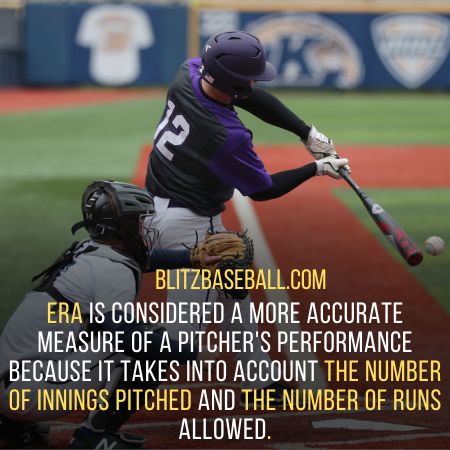Earned Run Average (ERA) is a crucial statistic in baseball for evaluating a pitcher’s performance. It determines the average number of earned runs a pitcher allows per nine innings pitched.
The lower the ERA, the better the pitcher’s performance.
In this complete guide, we will delve into the definition, calculation, and history of ERA.
We will explore the impact of defensive errors and passed balls on ERA, the importance of a lower ERA, and compare ERA standards throughout history.
Additionally, we will discuss records for the lowest ERA in a single season and all-time and the impossibility of finishing a pitching career with an ERA of zero.
Join us as we examine the significance of ERA in baseball and its role in evaluating a pitcher’s success.
Key Takeaways
- ERA is a crucial statistic for evaluating a pitcher’s performance in baseball.
- Calculation of ERA involves dividing the total number of earned runs allowed by the total number of innings pitched, multiplied by nine.
- Defensive errors and passed balls do not affect ERA, as only earned runs are considered.
- ERA has historical significance in baseball and is a crucial factor in determining a pitcher’s Hall of Fame candidacy.
What Is ERA In Baseball?
ERA, which stands for Earned Run Average, is a statistic in baseball that measures a pitcher’s effectiveness in preventing the opposing team from scoring runs.

It is calculated by dividing the total number of earned runs allowed by the total number of innings pitched, multiplied by nine.
The earned runs refer to the runs that were scored due to the pitcher’s performance, while unearned runs are those that were scored due to defensive errors or passed balls.
ERA is one of the most important statistics used to evaluate a pitcher’s performance, and it is widely regarded as the best way to compare pitchers across different eras and teams.
ERA is often compared to other pitching statistics, such as wins, losses, and strikeouts.
However, ERA is considered a more accurate measure of a pitcher’s performance because it takes into account the number of innings pitched and the number of runs allowed.
ERA is an essential metric for teams and players in baseball, as it helps them to understand a pitcher’s effectiveness and make strategic decisions.
For example, a pitcher with a high number of strikeouts may be impressive, but if they also allow a high number of runs, their ERA will be negatively affected.
Similarly, a pitcher with a high number of wins may have a good win-loss record, but if they also allow a high number of runs, their ERA will be higher and their overall performance will be questioned.
Calculation and Components

The calculation and components of a pitcher’s performance statistics play a crucial role in evaluating their effectiveness on the mound. ERA, or earned run average, is one of the most important and widely used statistics in baseball.
The ERA formula calculates the average number of earned runs a pitcher allows per nine innings pitched. It is calculated by dividing the total number of earned runs allowed by the number of innings pitched, and then multiplying that number by nine.
It is important to note that ERA only takes into account earned runs, which are runs scored due to the batter’s skill or the pitcher’s mistake. Unearned runs, which are runs scored due to the defense’s error or a passed ball, are not included in ERA.
However, these factors can still impact a pitcher’s ERA. Defensive errors can lead to more earned runs being scored, and passed balls can result in runners advancing and potentially scoring.
Therefore, while ERA is a valuable tool for evaluating a pitcher’s performance, it is important to consider the impact of defensive errors and other factors that may not be reflected in the statistic.
History and Significance
Looking back at the evolution of baseball statistics, ERA has played a significant role in evaluating a pitcher’s performance. ERA milestones have been recorded by some of the greatest pitchers in the game, including Cy Young, Walter Johnson, and Christy Mathewson. These milestones serve as a testament to the importance of ERA in baseball history.
Furthermore, ERA has also been a crucial factor in determining a pitcher’s Hall of Fame candidacy. Pitchers with low ERAs have a higher chance of being inducted into the Hall of Fame, as it is a clear indication of their dominance on the mound.
The significance of ERA can also be seen in the comparison of ERA standards throughout history. As the game has evolved, so have pitchers’ performances, and consequently, the standard for a good ERA has changed.
For instance, in the early days of baseball, an ERA of three was considered impressive, while today, an ERA below three is the norm. This demonstrates the importance of ERA as a tool for evaluating a pitcher’s performance in the context of the era in which they played.
Overall, ERA holds a special place in baseball history and continues to be a crucial factor in evaluating a pitcher’s performance.
Frequently Asked Questions
How does a pitcher’s ERA affect their contract negotiations?
A pitcher’s ERA can have a significant impact on salary negotiations, as teams often prioritize pitchers with lower ERAs. However, it is crucial to consider the effects of defensive errors on ERA when evaluating a pitcher’s performance.
Can a pitcher’s ERA be negatively impacted by the performance of their team’s offense?
Yes, a pitcher’s ERA can be negatively impacted by their team’s offensive performance. This is due to the correlation between pitcher statistics and team performance impact, as a weak offense can lead to less run support and increased pressure on the pitcher.
Is there a minimum number of innings pitched required to qualify for ERA leaderboards?
To be eligible for the ERA leaderboard, a pitcher must meet a minimum innings requirement, which varies depending on the league. Pitching statistics and ERA improvement can be impacted by both individual performance and team offense.
How do advanced statistics, such as FIP and xFIP, complement ERA in evaluating a pitcher’s performance?
Advanced statistics, such as FIP and xFIP, provide additional insight into a pitcher’s performance beyond ERA. Comparing ERA to other pitching statistics allows for a more comprehensive evaluation of a pitcher’s effectiveness.
Are there any notable pitchers who struggled with a high ERA early in their career before improving later on?
Some notable struggling pitchers with high early ERAs who later achieved career success include Randy Johnson, Pedro Martinez, and Greg Maddux. The improvement came from refining pitches and improving control.
Conclusion
In conclusion, ERA is a crucial statistic in evaluating a pitcher’s performance in baseball. Its calculation takes into account the number of earned runs a pitcher allows per nine innings pitched, and it has evolved throughout history to become a standard measure of success.
ERA is impacted by defensive errors and passed balls, which can affect a pitcher’s overall performance and skew their statistics. A lower ERA is generally indicative of a more successful pitcher, and the records for lowest ERA in a single season and all-time reflect the impressive accomplishments of some of the game’s greatest pitchers.
However, it is impossible to finish a pitching career with an ERA of zero, as even the best pitchers will inevitably give up runs over time. Overall, ERA remains an important tool for evaluating a pitcher’s success in baseball and will likely continue to be a critical statistic for years to come.
